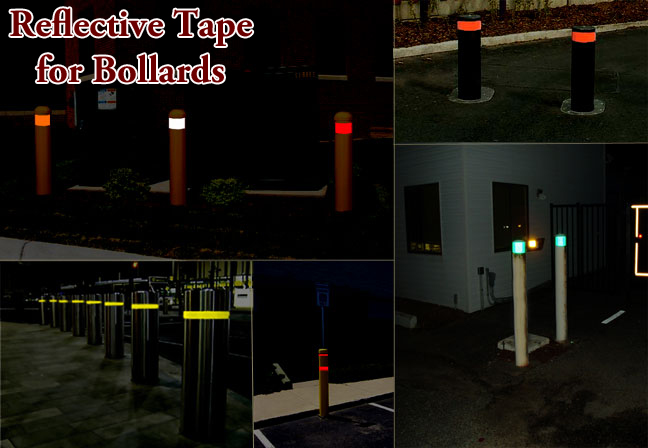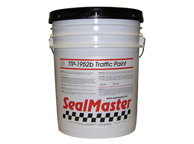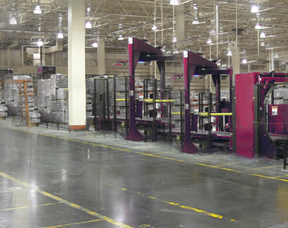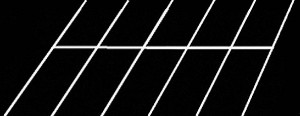Lines on facto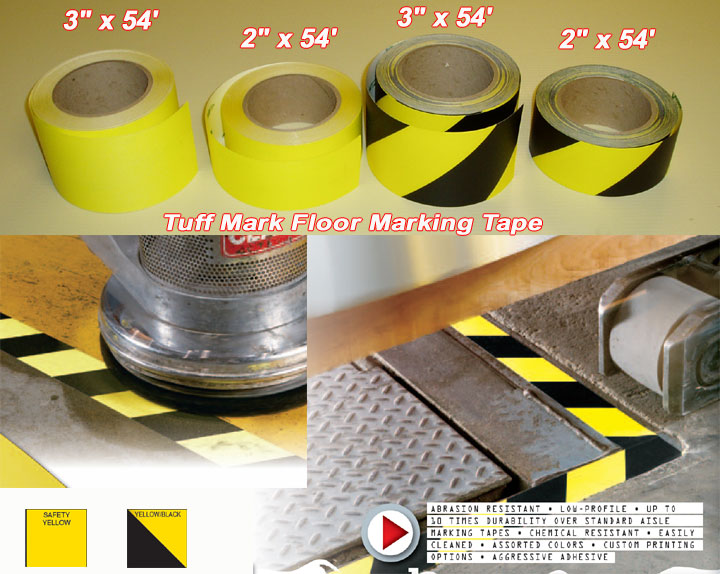 ry floors serve several purposes. Lines let people and machinery know where to go and where not to go. They designate where inventory and raw materials belong. They guide you to safety in the event of an emergency. And most of all, lines keep people safe. The liability to a company in the event of an accident on an unmarked floor is tremendous and avoidable.
ry floors serve several purposes. Lines let people and machinery know where to go and where not to go. They designate where inventory and raw materials belong. They guide you to safety in the event of an emergency. And most of all, lines keep people safe. The liability to a company in the event of an accident on an unmarked floor is tremendous and avoidable.
This article covers the various ways of striping a factory floor along with the pros and cons of each. We also cover what the different colors mean.
The color of a line has a distinct meaning. The chart below outlines what the different colors mean.
5S Floor Marking Color System
| Line Color |
Used to Mark: |
| Yellow |
Aisle-ways, traffic lanes and work cells |
| White |
Equipment and fixtures (workstations, carts, floor stand displays, racks, etc,) not otherwise color coded |
| Blue, green and/or black |
Materials and components, including raw materials, work-in-progress and finished goods |
| Orange |
Materials or product held for inspection |
| Red |
Defects, scrap, rework and red tag areas |
| Red and white |
Areas to be kept clear for safety/compliance reasons (e.g. areas in front of electrical panels, fire fighting equipment and safety equipment such as eyewash stations, safety showers and first aid cabinets) |
| Black and white |
Areas to be kept clear for operational purposes (not related to safety and compliance) |
| Black and yellow |
Areas that may expose employees to special physical or health hazards (e.g. flammable or combustive material containers); Indicates that extra caution should be exercised when entering and working in the area |
Ways of Creating Lines on Factory Floors
Solid color lines can be created using either paint, preformed thermoplastic or adhesive tapes. Striped lines can be created with paint or thermo but they are more easily created using pre-striped adhesive tapes. Remember, nothing sticks to wax, grease or dirt and nothing will stick to a wet floor. A clean dry surface that has been stripped of all wax and grease is necessary for any striping to work.
If you prefer to use tape we carry a product called Tuff Mark. It is an industrial floor striping tape that is extremely tough and has a very aggressive adhesive. The tape comes in 2″, 3″ and 4″ widths. The rolls are 54 feet long each. We have red, yellow, black, white, green, blue, yellow/black and white/red. We carry the yellow and yellow/black rolls in 2 and 3 inches at safety-tapes.com. For other colors and widths you can contact us at 850-934-3157. The advantage of using tape is ease of application. (no equipment needed) Longevity is another advantage especially when using the Tuff Mark product. Adhesive tapes work well on slick, smooth surfaces where paint often has a problem sticking. The main disadvantage of tape is the cost per linear foot. You can click here for an image of the available colors.
Another tape that you can use is our aluminum based floor marking tape. It is less expensive per linear foot than the Tuff Mark product. It has the advantage of being conformable since it is aluminum and is also removable if necessary. It can be damaged by fork lifts but is easily replaceable. We carry 1″, 2″ and 4″ rolls of this product in yellow and white. This product also works best on smooth surfaces but will conform if necessary.
Painting floors is probably the most popular way to apply lines. A paint striping machine like the ones we sell on this site work very well. A striping machine can lay down a hundred feet of lines in just a matter of minutes. The disadvantage of paint is that on a surface that is very slick it tends to want to flake back off. This is because it was not able to truly grip the surface. Grinding or scarifying the floor can correct this issue. A striping machine will apply any color that you need. The only thing it won’t do is put down striped lines.
Preformed Thermoplastic is another way to stripe floors. This is a 90 mil thick product that is melted into a surface. It is very tough and will last longer than any other form of striping. In general, this product will only work on a surface that is porous. To test your surface just take a teaspoon of water and apply it to the cement. If it soaks in immediately then preformed thermoplastic should work well. If it sits on top then preformed will not work well. As a general rule, if a surface is like a driveway it will be porous and will be compatible. If it is like a garage floor it will be too slick. One thing to note is that scarifying of grinding the surface can will make it compatible in most cases. Also, preformed thermoplastic works very well on all asphalt surfaces.
Note – Tapes are great on smooth surfaces where all of the tape can make contact with all of the surface. Paints and thermoplastic work best on porous rougher surfaces where they have something to grab onto. Tape will often work on surfaces that paint will not stick to and paint or thermoplastic will often work on surfaces that tape will not conform and stick to.
All of the products listed above have characteristics that make them the best choice given certain conditions. A typical factory may use tape, paint, and preformed thermoplastic for the different areas in the plant.
Author – Steven Cole (Economics, MBA – University of West Florida, Graduate Certificate – Stanford University)
30 years of experience in the Parking Lot Striping Business. Software developer for pricing striping jobs. Hands on experience with the Trusco Trueline Paint Striper.
